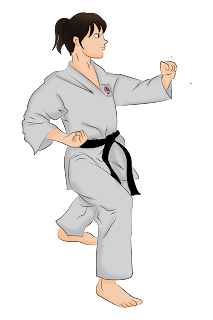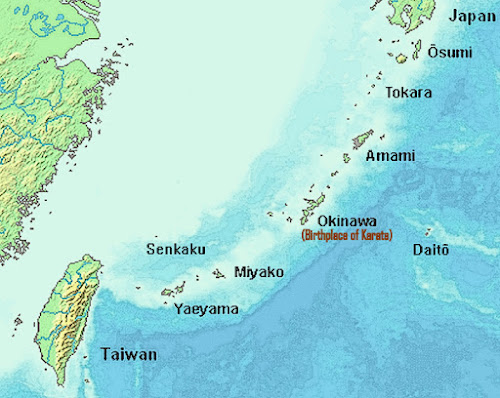Basic Karate
Karate Basics
The three forms of movements
that make up combinations and techniques
in karate are:
•
Kihon (Basic techniques)
•
Kata (Form
or pattern)
•
Kumite (Free Sparring)
‘Kihon’ is a Japanese term that means ‘basics’. ‘Ki’ means ‘foundation’ and ‘Hon’ means ‘base’. This word reflects the importance the Japanese place on mastering the basic skills of a discipline. In karate, the basics are our punches, our kicks, our blocks, our strikes, and our stances. In order to build a strong foundation for our karate, we must drill and practice the basics constantly.
‘Kata’ means ‘form’. Forms are sequences of movements that are put together in an overall pattern that we must memorize. The kata consists of kicks, punches, sweeps, strikes, blocks, and throws. Shotokan Karate is comprised of 29 katas, each with its own emphasis on fast and slow or controlled and powerful movements.
‘Kumite’ means ‘training with a partner’. ‘Kumi’ means ‘to cross’ and ‘Te’ means ‘hand’. ‘Kumite’ therefore means ‘crossing hands’ with the person we are working with. It is when partners practice fighting techniques. Basic partner work introduces prearranged training drills that help us get used to using different punches, kicks, blocks, and strikes. It covers a vast range of activities.







Comments